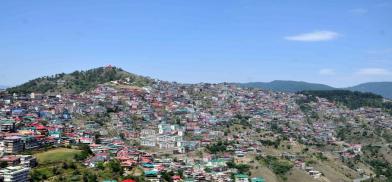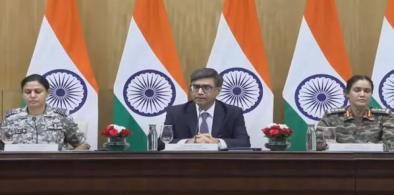India needs to pay greater attention to urban planning to avoid future disasters
Townships in our hilly regions are mushrooming in a grossly unplanned and unscientific manner, generating excessive pressure on the rock surface, which can manifest in catastrophes.

Urban/town planning is a technology cum political process that is focused on the development and design of land use, including environmental issues, transportation etc. The basic aim always remains to cater to the needs of future generations while avoiding any haphazard growth of urban areas. Thus, the period for this prospective planning process should surely be looking at a time frame of over 50 to 75 years. Paris was redesigned into a more modern capital with long, straight, wide boulevards at the direction of Napoleon III, exemplifying creditable foresight and forethought. This study must be inclusive with the planning parameters being an amalgam of engineering, architecture, survey, environment, and transportation. Traditionally, the prime aim was focused on public welfare, which now also includes health care and the well-being of the population involved.
In the Indian context, our planners have done a fine job at the macro level with well-conceived master plans, incorporating the basic principles of urban planning to include road systems, zoning, green belt, housing, transportation etc. However, we seem to have exhibited a myopic view of the time and space of the plan in certain aspects. Zoning is the basic methodology that is followed worldwide for urban planning. In our case, though the recently planned commercial and industrial zoning has distinct and separate land utilisation with elaborate infra and support systems, most of the residential zoning planned has already attained dismal conditions. Somehow, we are rather conservative in planning road width to match up with the times. We could not foresee the impact of economic prosperity and the resultant desire for better living, especially when we have been exposed to living conditions in affluent countries.
Poor road planning
Our lanes, streets, and main road arteries in residential areas are so very narrow that they could not withstand increased pressure after a mere 30-odd years. Single-story houses of 1960-70 vintage have become four stories, with each floor owner possessing a minimum of two cars with no personal parking space within the building. Our prospective plan should have catered for ensuring individual parking space and legislated as such. As a result, today our neighborhood roads have severely encroached with irregularly parked vehicles. Possibly due to political and municipal indulgence, offices, clinics, and small shops have mushroomed in residential areas which has added to the already existing chaos for parking. Increased population in residential areas obviously brought increased pressure on other basic amenities like water, electricity etc. The civic administration had to upgrade the infrastructure on a firefighting basis resulting in a total lack of coordination between various agencies of the administration, what with the roads dug up one day by the electricity department, followed by the drainage people, and a little later by the sewage department. It is a well-known fact that faulty road systems in the initial stages of town formation prove to be very difficult and costly to repair/ rearrange in the future.
The UN Economic and Social Council (ECOSOC) has predicted around 2.5 billion more people to occupy urban areas by 2050. It may not be too late for us to implement methodologies to save our congested urban areas. London has amended its policy and a congestion charge is levied on vehicles accessing already crowded areas in the city. Our country also has model townships/cities planned by world-renowned planners including Le Corbusier. Greater Kailash in New Delhi and Chandigarh were planned around the same time. Chandigarh has proved its sustainability over the years. New Gurugram was established a little over two decades ago. Except for an odd road, most of the inner roads in new Gurugram already remain saturated with traffic, necessitating interference after just 20-odd years. Townships in our hilly regions are mushrooming in a grossly unplanned and unscientific manner, generating excessive pressure on the rock surface, which can manifest in catastrophes. There are numerous such examples nationwide.
The world is now experiencing a transformation in highway and mountain road construction, duly incorporating safety parameters. The government has made us proud with world-class highways across the nation. Just that there is a need to ensure the implementation of the policy on the distance specified for construction away from the highway. Roads in mountainous terrain need greater focus and less political interference. The Himalayas are fragile and demand hillside cutting for road construction within acceptable limits. A case in point is the Char Dham axis in Uttarakhand. The planned width of the road is in excess of 5.5 metres and the road cutting has been mostly vertical for up to 24 metres into the hill slope, even though a study conducted by the competent agency recommended not more than a 5.5 metre-wide road. Road-construction debris are emptied into the rivers below, further raising the already silt-burdened river bed and resulting in disastrous flooding.
Strategic planning required
Mountainous roads built on pillars in areas where ground-level construction is considered disaster-prone is the basic norm today. This protects roads from the fury of swollen rivers, apart from reducing travel distance, reducing circuitous mountain curves, and facilitating the movement of heavy vehicles.
A few major issues for consideration are listed below.
- Long-term strategic thinking, vision, research, and analysis incorporating environmental aspects for future growth.
- Sustainability and denying potential congestion.
.- Road network hierarchy in cities/towns should cater to the projected traffic envisaged.
- Community inputs for policy formulation related to noise pollution and road safety measures.
- Despite enforcement methodologies including government-approved zoning, planning permissions, and building codes need greater attention.
- Realign the planning parameters based on experience and need.
We stand extremely proud of our comprehensive national power. The nation has made a mark in the comity of nations and is spearheading global causes affecting mankind. However, some basic issues directly affecting our future generations merit our attention today.
(The author is a former GOC of an Indian Army corps in a high-altitude area. Views are personal. He can be contacted at rajanbakhshi@gmail.com)




















Post a Comment